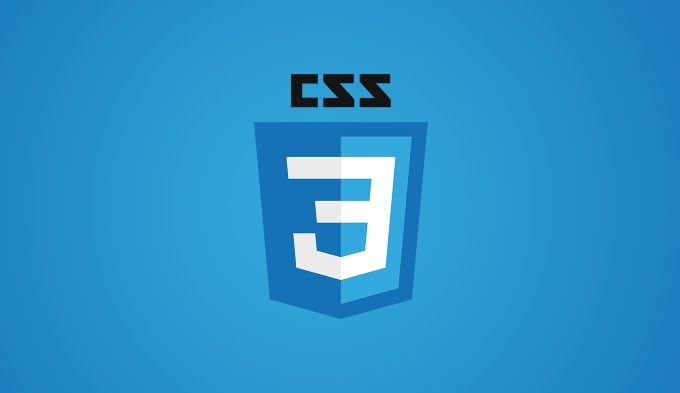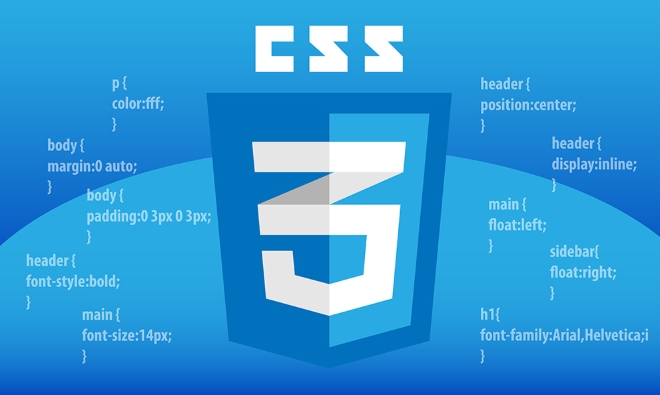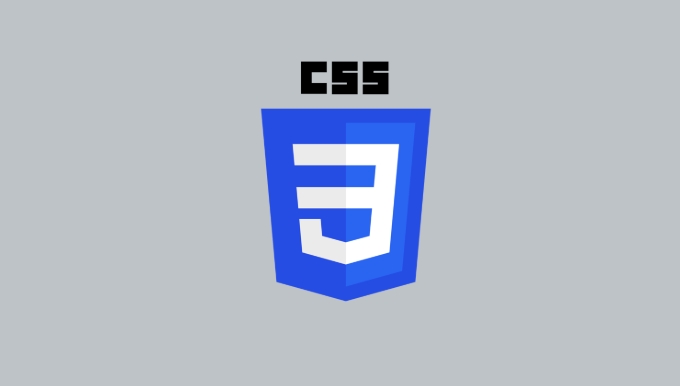To make CSS animation smooth, you need to select the right properties, control the rhythm, and reduce rearrangement and redrawing. 1. Priority is given to using high-performance attributes such as transform and opacity to avoid frequent triggering of re-arranged width and height; 2. Reasonably set the transition time (0.2s~0.5s) and functions, such as ease-in-out or custom cubic-bezier curves; 3. Avoid layout jitter in JS, use requestAnimationFrame instead or hand it over to CSS for processing; 4. Appropriately enable hardware acceleration, such as translateZ(0), but use will-change with caution to avoid excessive memory.

CSS transitions and animations are important tools to improve the web interactive experience, but to do it "smooth" does not just add a transition: all 0.3s . The key is to understand their working mechanism and optimize them according to actual scenarios.

Use the correct properties
Not all CSS properties are suitable for animation. Some properties frequently trigger publishing or drawing operations when changing, resulting in lag. For example, width and height changes may cause reflow, while opacity and transform almost only involve synthesizer-level operations, with better performance.

Recommended priority attributes:
-
opacity -
transform(such as translate, scale, rotate) -
filter(some browsers support better)
If you have to move the layout-related attributes, it is best to control the frequency and range, or consider using will-change or translateZ to tell the browser in advance that this element may move.

Control transition time and functions
The default ease function is actually good, but many times we still need to adjust the time curve according to the specific effect to make the animation look more natural.
Some common suggestions:
- Fast in and slow out:
cubic-bezier(0.25, 0.1, 0.25, 1)(this is the default) - Simple and fast:
ease-in-outorcubic-bezier(0.4, 0, 0.2, 1) - If you are more flexible, try
cubic-bezier(0.68, -0.55, 0.27, 1.55)
In terms of time, it is generally recommended to be between 0.2s and 0.5s . It is too short and has no feeling, and it is too long and procrastinating. Of course, complex animation effects may require combining different durations to create a sense of rhythm.
Avoid forced synchronous layouts and frequent redrawing
A common problem is that we frequently modify styles in JS, causing the browser to constantly recalculate the layout. For example:
element.style.left = '10px'; console.log(element.offsetTop); // Force synchronous layout! element.style.left = '20px';
This can cause "layout thrashing" to severely slow down the page. If you want to do complex animations, it is best to use requestAnimationFrame or simply leave it to CSS to handle it.
In addition, try to avoid modifying properties that will cause redrawing in the animation, such as box-shadow or border-radius , unless you are sure that performance is OK.
Rational use of hardware acceleration
Modern browsers automatically enable GPU acceleration for certain CSS operations, such as transform and opacity . But we can also actively trigger it through some tricks:
- Add
transform: translateZ(0)orwill-change: transformto the element - Especially useful for mobile devices, because GPUs perform better on mobile devices
But don't abuse will-change , it will take up extra memory and is not a universal accelerator. Use only if you know clearly that an element is about to change frequently.
Basically that's it. CSS animation is not complicated, but there are many details, so it will get stuck if you are not careful. The key is to select the right attributes, control the rhythm, reduce rearrangement and redrawing, and the rest is to debug more and see the smoothness.
The above is the detailed content of Creating smooth CSS transitions and animations. For more information, please follow other related articles on the PHP Chinese website!

Hot AI Tools

Undress AI Tool
Undress images for free

Undresser.AI Undress
AI-powered app for creating realistic nude photos

AI Clothes Remover
Online AI tool for removing clothes from photos.

Clothoff.io
AI clothes remover

Video Face Swap
Swap faces in any video effortlessly with our completely free AI face swap tool!

Hot Article

Hot Tools

Notepad++7.3.1
Easy-to-use and free code editor

SublimeText3 Chinese version
Chinese version, very easy to use

Zend Studio 13.0.1
Powerful PHP integrated development environment

Dreamweaver CS6
Visual web development tools

SublimeText3 Mac version
God-level code editing software (SublimeText3)
 CSS tutorial for creating loading spinners and animations
Jul 07, 2025 am 12:07 AM
CSS tutorial for creating loading spinners and animations
Jul 07, 2025 am 12:07 AM
There are three ways to create a CSS loading rotator: 1. Use the basic rotator of borders to achieve simple animation through HTML and CSS; 2. Use a custom rotator of multiple points to achieve the jump effect through different delay times; 3. Add a rotator in the button and switch classes through JavaScript to display the loading status. Each approach emphasizes the importance of design details such as color, size, accessibility and performance optimization to enhance the user experience.
 Addressing CSS Browser Compatibility issues and prefixes
Jul 07, 2025 am 01:44 AM
Addressing CSS Browser Compatibility issues and prefixes
Jul 07, 2025 am 01:44 AM
To deal with CSS browser compatibility and prefix issues, you need to understand the differences in browser support and use vendor prefixes reasonably. 1. Understand common problems such as Flexbox and Grid support, position:sticky invalid, and animation performance is different; 2. Check CanIuse confirmation feature support status; 3. Correctly use -webkit-, -moz-, -ms-, -o- and other manufacturer prefixes; 4. It is recommended to use Autoprefixer to automatically add prefixes; 5. Install PostCSS and configure browserslist to specify the target browser; 6. Automatically handle compatibility during construction; 7. Modernizr detection features can be used for old projects; 8. No need to pursue consistency of all browsers,
 What is the difference between display: inline, display: block, and display: inline-block?
Jul 11, 2025 am 03:25 AM
What is the difference between display: inline, display: block, and display: inline-block?
Jul 11, 2025 am 03:25 AM
Themaindifferencesbetweendisplay:inline,block,andinline-blockinHTML/CSSarelayoutbehavior,spaceusage,andstylingcontrol.1.Inlineelementsflowwithtext,don’tstartonnewlines,ignorewidth/height,andonlyapplyhorizontalpadding/margins—idealforinlinetextstyling
 Styling visited links differently with CSS
Jul 11, 2025 am 03:26 AM
Styling visited links differently with CSS
Jul 11, 2025 am 03:26 AM
Setting the style of links you have visited can improve the user experience, especially in content-intensive websites to help users navigate better. 1. Use CSS's: visited pseudo-class to define the style of the visited link, such as color changes; 2. Note that the browser only allows modification of some attributes due to privacy restrictions; 3. The color selection should be coordinated with the overall style to avoid abruptness; 4. The mobile terminal may not display this effect, and it is recommended to combine it with other visual prompts such as icon auxiliary logos.
 Creating custom shapes with css clip-path
Jul 09, 2025 am 01:29 AM
Creating custom shapes with css clip-path
Jul 09, 2025 am 01:29 AM
Use the clip-path attribute of CSS to crop elements into custom shapes, such as triangles, circular notches, polygons, etc., without relying on pictures or SVGs. Its advantages include: 1. Supports a variety of basic shapes such as circle, ellipse, polygon, etc.; 2. Responsive adjustment and adaptable to mobile terminals; 3. Easy to animation, and can be combined with hover or JavaScript to achieve dynamic effects; 4. It does not affect the layout flow, and only crops the display area. Common usages are such as circular clip-path:circle (50pxatcenter) and triangle clip-path:polygon (50%0%, 100 0%, 0 0%). Notice
 How to create responsive images using CSS?
Jul 15, 2025 am 01:10 AM
How to create responsive images using CSS?
Jul 15, 2025 am 01:10 AM
To create responsive images using CSS, it can be mainly achieved through the following methods: 1. Use max-width:100% and height:auto to allow the image to adapt to the container width while maintaining the proportion; 2. Use HTML's srcset and sizes attributes to intelligently load the image sources adapted to different screens; 3. Use object-fit and object-position to control image cropping and focus display. Together, these methods ensure that the images are presented clearly and beautifully on different devices.
 Demystifying CSS Units: px, em, rem, vw, vh comparisons
Jul 08, 2025 am 02:16 AM
Demystifying CSS Units: px, em, rem, vw, vh comparisons
Jul 08, 2025 am 02:16 AM
The choice of CSS units depends on design requirements and responsive requirements. 1.px is used for fixed size, suitable for precise control but lack of elasticity; 2.em is a relative unit, which is easily caused by the influence of the parent element, while rem is more stable based on the root element and is suitable for global scaling; 3.vw/vh is based on the viewport size, suitable for responsive design, but attention should be paid to the performance under extreme screens; 4. When choosing, it should be determined based on whether responsive adjustments, element hierarchy relationships and viewport dependence. Reasonable use can improve layout flexibility and maintenance.
 What are common CSS browser inconsistencies?
Jul 26, 2025 am 07:04 AM
What are common CSS browser inconsistencies?
Jul 26, 2025 am 07:04 AM
Different browsers have differences in CSS parsing, resulting in inconsistent display effects, mainly including the default style difference, box model calculation method, Flexbox and Grid layout support level, and inconsistent behavior of certain CSS attributes. 1. The default style processing is inconsistent. The solution is to use CSSReset or Normalize.css to unify the initial style; 2. The box model calculation method of the old version of IE is different. It is recommended to use box-sizing:border-box in a unified manner; 3. Flexbox and Grid perform differently in edge cases or in old versions. More tests and use Autoprefixer; 4. Some CSS attribute behaviors are inconsistent. CanIuse must be consulted and downgraded.






